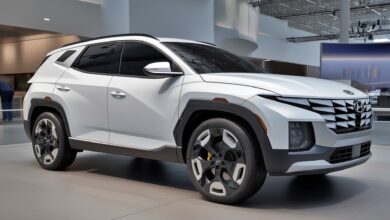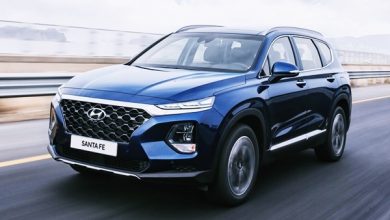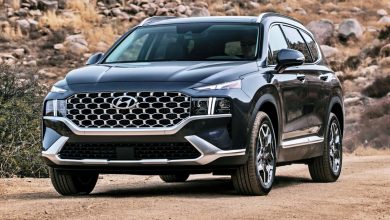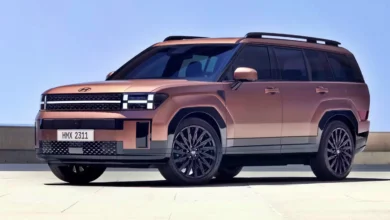2025 Hyundai Santa Fe Plug-in Hybrid
2025 Hyundai Santa Fe Plug-in Hybrid
The 2025 Hyundai Santa Fe Plug-in Hybrid exemplifies the automaker’s dedication to fostering innovation and promoting sustainable practices.
This model distinguishes itself within the highly competitive SUV market due to its notable attributes, encompassing a harmonious blend of robust performance, optimal fuel economy, and cutting-edge technological advancements.
2025 Hyundai Santa Fe Plug-in Hybrid
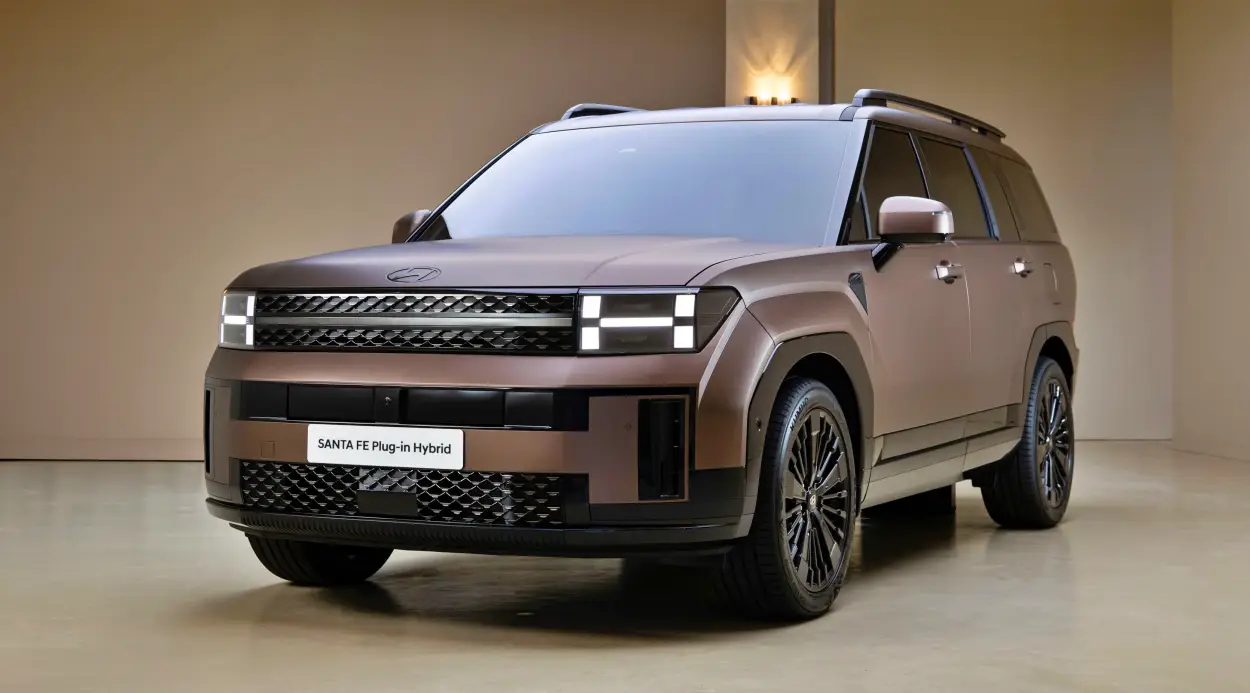
The Santa Fe Plug-in Hybrid of 2025 features a full-parallel hybrid drive system that generates 265 PS of combined power.
The new 1.6-liter T-GDi engine produces 180 horsepower, and the 66.9-kilowatt electric motor adds to that. Compared to the HEV version’s 1.49 kWh battery, this massive 13.8 kWh capacity greatly improves the car’s performance.
With the stroke of a button, drivers can transition to all-electric mode thanks to the high-power lithium-ion battery.
A key difference between the Santa Fe Hybrid and the Plug-in Hybrid is the requirement for external charging via a plug-in mechanism.
Nevertheless, this particular characteristic enables the Plug-in Hybrid to provide a range of 30 miles only on electric power, as determined by the Environmental Protection Agency (EPA), contingent upon a battery pack that has been completely charged.
Additionally, the vehicle exhibits a noteworthy combined MPGe of 76, rendering it a commendable option for environmentally aware individuals seeking fuel efficiency.
2025 Hyundai Santa Fe Interior
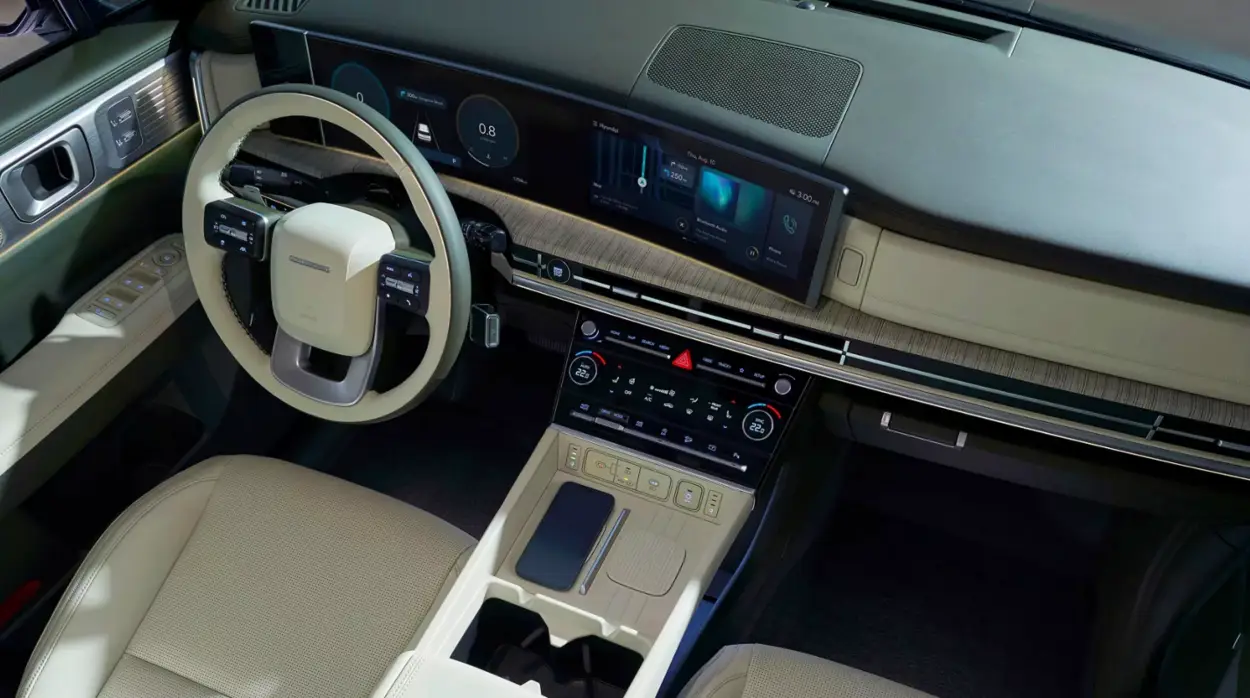
The inside of the 2025 Santa Fe Plug-in Hybrid is as remarkable as its performance specifications. The dashboard is equipped with a pair of 12.3-inch displays comprising a fully digital gauge cluster and an infotainment screen.
In addition, the vehicle provides dual wireless smartphone charging mats and USB-C connections for wired charging.
Regarding safety, Santa Fe has a comprehensive range of driver-assistance technology as standard features.
These include adaptive cruise control, lane-keeping assist, forward-collision warning, and automated emergency braking.
It is anticipated that the 2025 Hyundai Santa Fe Plug-in Hybrid will be priced in a manner that fosters competition, providing a midsize cabin area at a comparable price range to compact vehicles such as Toyota’s RAV4 Prime plug-in.
In summary, the 2025 Hyundai Santa Fe Plug-in Hybrid demonstrates considerable potential as a valuable inclusion within the SUV market, presenting robust performance, fuel efficiency, and cutting-edge technological capabilities.
The vehicle’s creative design and use of advanced technology make it an appealing option for anyone needing a sustainable and adaptable transportation solution.
Frequently Asked Questions:
Q: What are the fuel economy ratings for the Hyundai Santa Fe?
A: The fuel economy ratings for the Hyundai Santa Fe vary depending on the engine and trim level:
- 2.5L 4-cylinder engine: 25 mpg city/32 mpg highway
- Turbocharged 2.5L 4-cylinder engine: 22 mpg city/29 mpg highway
Q: What are the safety features of the Hyundai Santa Fe?
A: The Hyundai Santa Fe comes standard with a variety of safety features, including:
- Forward collision warning with automatic emergency braking
- Lane departure warning with lane-keeping assist
- Blind-spot monitoring with rear cross-traffic alert
- Rearview camera
- Adaptive cruise control
The Santa Fe also offers a variety of available safety features, such as:
- A surround-view camera system
- A head-up display
- A driver attention warning system
- A pedestrian detection system
Q: What is the price of the Hyundai Santa Fe?
A: The price of the Hyundai Santa Fe varies depending on the engine and trim level:
- SE: $27,245
- SEL: $29,745
- XRT: $31,245
- Limited: $34,745
- Calligraphy: $38,245
Q: What are the pros and cons of the Hyundai Santa Fe?
A: Here are some of the pros and cons of the Hyundai Santa Fe:
Pros:
- Spacious and comfortable interior
- Advanced safety features
- Available hybrid powertrain
- Good fuel economy
- Competitive Pricing
Cons:
- Some rivals have more cargo space
- The third-row seat is cramped
- The infotainment system can be slow to respond

